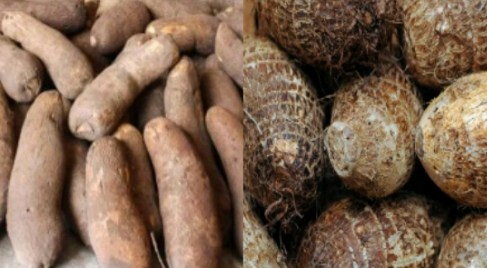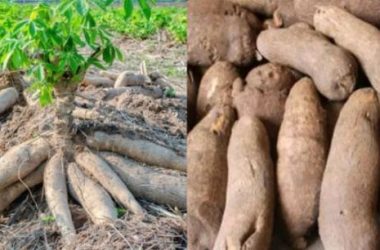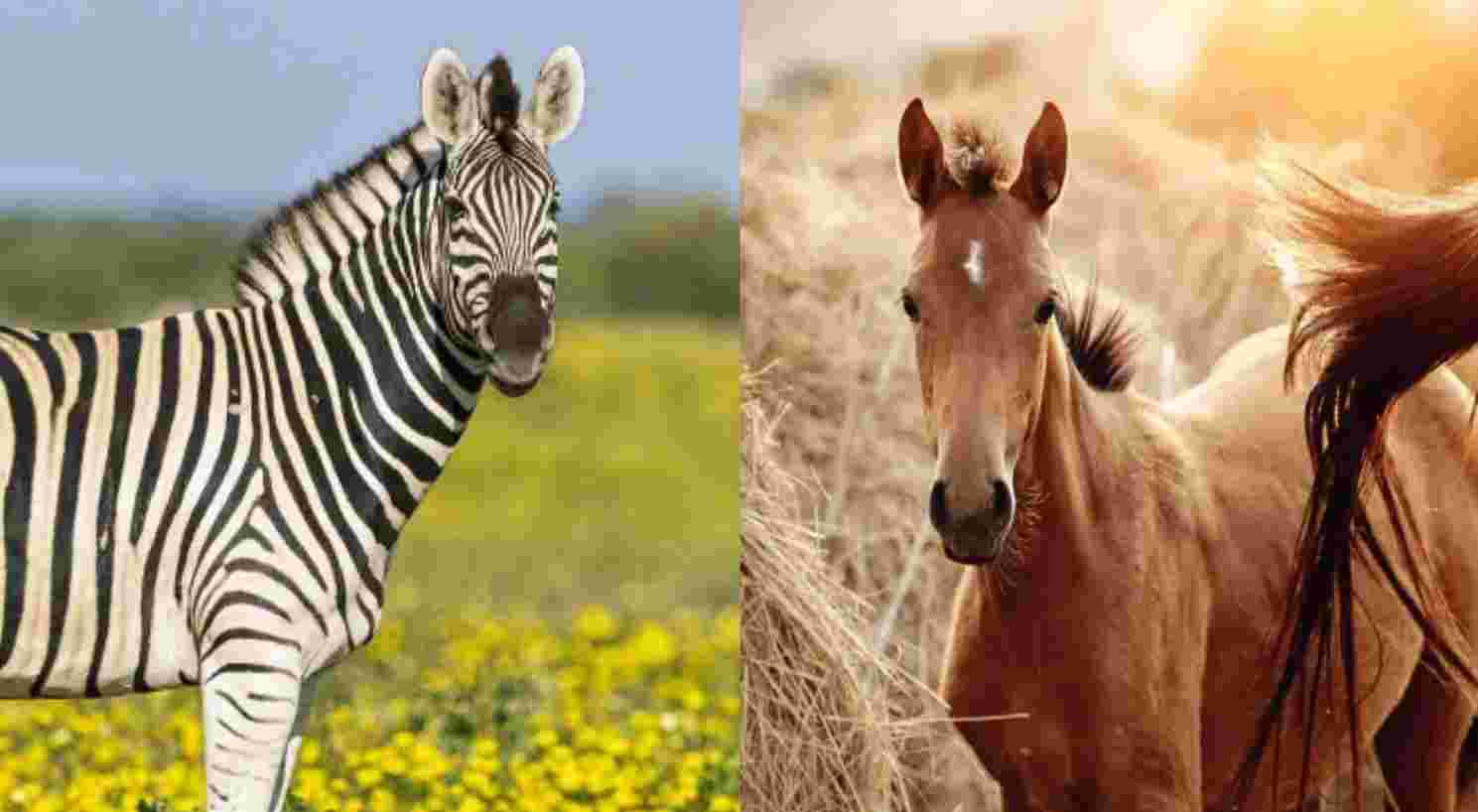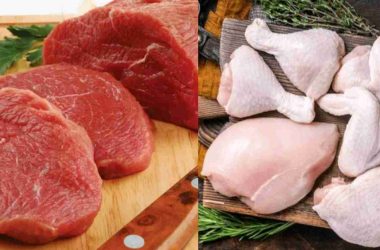In the world of tuberous vegetables, yam and cocoyam stand out as dietary staples with distinct characteristics and culinary uses. Despite their similar-sounding names, yam (Dioscorea species) and cocoyam (Colocasia and Xanthosoma species) belong to different botanical families and offer unique nutritional profiles. In this detailed exploration, we will delve into the differences between yam and cocoyam, examining their botanical origins, culinary applications, nutritional content, and cultivation methods.
Yam: Nature’s Nutrient-Rich Tuber
Botanical Distinction
Belonging to the Dioscorea Family
Yams, belonging to the Dioscorea family, are starchy tuberous roots that have been a dietary staple in many cultures for centuries. Dioscorea species encompass various types of yams, each with its own unique flavor, texture, and appearance. Yams are a significant source of carbohydrates and provide essential nutrients.
Culinary Uses
Versatility in the Kitchen
Yams are known for their versatility in the kitchen. They can be boiled, roasted, fried, or mashed, and are featured in both savory and sweet dishes. In many African and Caribbean cuisines, yams play a central role in traditional dishes, such as yam porridge, yam fries, and yam pudding.
Nutritional Profile
Rich in Carbohydrates and Dietary Fiber
Yams are rich in complex carbohydrates, providing a sustained source of energy. They also contain dietary fiber, which contributes to digestive health. Yams are a good source of essential vitamins and minerals, including vitamin C, vitamin B6, potassium, and manganese.
For further insights into yams, you can visit Yam on Wikipedia.
Cocoyam: The Starchy Delight
Botanical Distinction
Belonging to the Colocasia and Xanthosoma Genera
Cocoyam refers to tuberous roots belonging to the Colocasia and Xanthosoma genera. Unlike yams, cocoyams are characterized by their distinct heart-shaped leaves and belong to the Araceae family. Colocasia esculenta and Xanthosoma sagittifolium are common species within the cocoyam category.
Culinary Uses
A Culinary Canvas
Cocoyams are culinary canvases that lend themselves to various preparations. They can be boiled, roasted, fried, or used in soups and stews. In West African cuisines, cocoyams are often featured in dishes like cocoyam porridge, fufu (a starchy side dish), and as a thickening agent in soups.
Nutritional Profile
Rich in Carbohydrates and Dietary Fiber
Similar to yams, cocoyams are rich in carbohydrates and provide dietary fiber. They contribute to energy production and digestive health. Cocoyams also contain essential vitamins and minerals, including vitamin C, vitamin A, potassium, and folate.
For more information on cocoyams, you can visit Cocoyam on Wikipedia.
Contrasting Characteristics
Flavor and Texture
Distinct Flavors and Textures
One of the primary differences between yams and cocoyams lies in their flavors and textures. Yams typically have a starchy, neutral taste and a dense, mealy texture. Cocoyams, on the other hand, can vary in flavor, with some varieties having a nutty or slightly sweet taste. Cocoyams often have a smoother, creamier texture compared to yams.
Appearance
Visual Distinctions
Visually, yams and cocoyams can be distinguished by their appearance. Yams are cylindrical with rough, scaly skin that can range from light to dark brown. Cocoyams, on the other hand, often have smoother, lighter-colored skin, and some varieties may have a pinkish or purplish tint.
Botanical Families
Different Botanical Families
Botanically, yams belong to the Dioscoreaceae family, while cocoyams belong to the Araceae family. This botanical distinction is significant, as it influences not only the appearance and taste but also the cultivation methods and growing conditions of these tuberous vegetables.
Growing Conditions
Varied Cultivation Requirements
Yams and cocoyams thrive in different growing conditions. Yams prefer tropical climates with well-drained, sandy soil, and they are often propagated using vine cuttings or tubers. Cocoyams, on the other hand, are adaptable to both tropical and subtropical climates, and they prefer moist, fertile soil. They are typically grown from corms or cormels.
Culinary Significance in Different Cultures
Yams
Global Culinary Influence
Yams have a global culinary influence and are featured in diverse cuisines. In West Africa, yams are a dietary staple and are celebrated in festivals like the Yam Festival in Nigeria. In the Caribbean, yams are integral to traditional dishes like Jamaican yam and saltfish.
Cocoyams
Regional Culinary Importance
Cocoyams hold significant culinary importance in regions where they are cultivated. In West Africa, cocoyams are used in various dishes, and their leaves are employed in cooking. In the Caribbean, cocoyams feature in dishes like Trinidadian callaloo, where the leaves are combined with okra and coconut milk.
Conclusion
In conclusion, the differences between yams and cocoyams extend beyond their botanical origins to encompass flavor, texture, appearance, and culinary applications. While both tuberous vegetables contribute to global cuisines and provide essential nutrients, their unique characteristics make them distinct entities in the culinary world.
Whether enjoying the starchy, mealy goodness of yams or savoring the smoother, creamier texture of cocoyams, these tuberous vegetables add depth and variety to the culinary landscape. Understanding the differences between yams and cocoyams not only enhances culinary appreciation but also provides insights into the rich cultural and agricultural tapestry of regions where these tubers hold significance.
For a broader perspective on tuberous vegetables, you can visit Tuber on Wikipedia. This article provides insights into various root crops and their significance in global agriculture and cuisine. Ultimately, the choice between yams and cocoyams depends on personal taste preferences and the culinary canvas one wishes to explore.
Contents
- 1 Yam: Nature’s Nutrient-Rich Tuber
- 2 Belonging to the Dioscorea Family
- 3 Versatility in the Kitchen
- 4 Rich in Carbohydrates and Dietary Fiber
- 5 Cocoyam: The Starchy Delight
- 6 Belonging to the Colocasia and Xanthosoma Genera
- 7 A Culinary Canvas
- 8 Rich in Carbohydrates and Dietary Fiber
- 9 Contrasting Characteristics
- 10 Distinct Flavors and Textures
- 11 Visual Distinctions
- 12 Different Botanical Families
- 13 Varied Cultivation Requirements
- 14 Culinary Significance in Different Cultures
- 15 Global Culinary Influence
- 16 Regional Culinary Importance
- 17 Conclusion

















